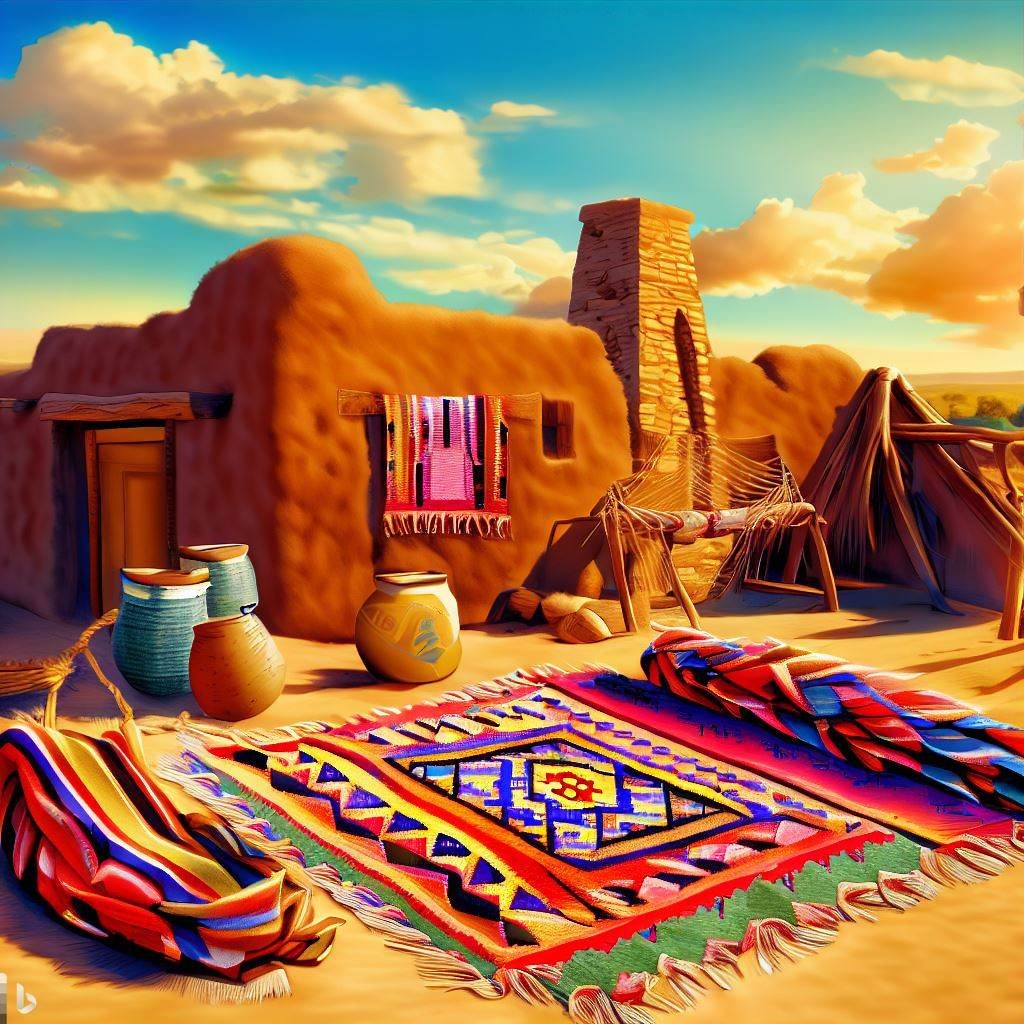Navajo Culture: Traditions, Art, and Values in a Vibrant Society
The Navajo people, also known as the Diné, have a rich and multifaceted culture that has endured through centuries of change and adaptation. This article delves into the various aspects of Navajo culture, focusing on their traditions, art, values, and the ways in which they connect with other Native American tribes. By fostering a greater understanding of the interconnected histories, cultures, and experiences of the Navajo and other indigenous peoples, we aim to promote unity and appreciation for the diverse tapestry of Native American life.
Navajo Language and Oral Traditions:
Central to Navajo culture is the Diné language, an Athabaskan language that is not only a means of communication but also serves as a vessel for the tribe’s oral traditions, history, and spiritual beliefs. The Navajo language has been passed down through generations, with oral traditions such as storytelling, songs, and prayers playing a significant role in preserving the tribe’s cultural knowledge.
The Navajo oral tradition is characterized by its rich narratives, which often convey important moral lessons and cultural values. Hero Twins, for example, is a well-known Navajo story that exemplifies the triumph of good over evil, highlighting the importance of cooperation and balance in maintaining harmony within the world.
Key Components of Navajo Language and Oral Traditions
Navajo Art and Crafts:
Navajo art and crafts are recognized for their beauty, craftsmanship, and cultural significance. Among the most notable forms of Navajo art are weaving, pottery, jewelry making, and sandpainting.
Weaving, in particular, is a highly valued Navajo art form. Navajo rugs and blankets are renowned for their intricate geometric designs and vibrant colors, reflecting both Navajo aesthetics and the influence of neighboring tribes, such as the Pueblo. Navajo weavers use a vertical loom and handspun yarns, typically made from the wool of Churro sheep.
Navajo Art and Crafts

Weaving: Rugs and Blankets

Pottery: Utilitarian and decorative objects

Jewelry making: Silver and turquoise jewelry

Sandpainting: Ritual and healing art form
Navajo Religion and Spirituality:
Navajo religion and spirituality are deeply intertwined with the tribe’s understanding of the world and their place within it. Central to Navajo beliefs is the concept of Hózhǫ́, which emphasizes the importance of living in balance and harmony with the natural world, the spiritual realm, and the community.
Navajo religious practices often involve rituals, prayers, and ceremonies designed to maintain this balance and restore harmony when it is disrupted. One of the most well-known Navajo ceremonies is the Blessingway, a healing ritual that seeks to restore Hózhǫ́ within an individual’s life.
Key Concepts in Navajo Religion and Spirituality
Navajo Intertribal Connections:
As a result of their interactions with other Native American tribes, the Navajo have developed cultural connections that are evident in various aspects of their society. For example, their adoption of agricultural practices, artistic techniques, and religious elements from the Pueblo peoples has shaped the development of Navajo culture in significant ways.
Trade and exchange networks between the Navajo and neighboring tribes, such as the Apache and Ute, have further facilitated the sharing of ideas, materials, and cultural practices. Through these interactions, the Navajo have established relationships with other indigenous peoples in the region, fostering a sense of unity and interconnectedness among the diverse tribes of the Southwest.
Intertribal Connections and Influences in Navajo Culture
Contemporary Navajo Culture and Preservation Efforts:
While the Navajo culture has evolved over time, efforts have been made to preserve and maintain their traditional practices, beliefs, and values. One such effort is the establishment of Navajo language immersion schools, which aim to revitalize the Diné language and maintain the tribe’s linguistic heritage.
Additionally, contemporary Navajo artists continue to create and innovate within traditional art forms, such as weaving, pottery, and jewelry making. By doing so, they not only contribute to the preservation of Navajo artistic traditions but also foster cultural exchange and understanding with other indigenous communities and the broader global audience.
Contemporary Navajo Culture and Preservation Efforts
Conclusion:
The Navajo culture is a rich and dynamic tapestry of traditions, art, values, and intertribal connections that has been shaped by centuries of change and adaptation. By examining the various aspects of Navajo culture, we gain a deeper appreciation for the tribe’s unique heritage and the ways in which they have interacted with other Native American peoples throughout history.
Understanding and acknowledging the interconnected histories, cultures, and experiences of the Navajo and other indigenous tribes is crucial for promoting unity and connection among these diverse communities. By celebrating the richness and diversity of Native American cultures, we contribute to a more inclusive and respectful understanding of the indigenous peoples who have played, and continue to play, an essential role in the tapestry of human history.
References:
- Iverson, P. (2002). “Diné: A History of the Navajos”. Albuquerque: University of New Mexico Press.
- Kelley, K. B., & Francis, J. E. (1994). “Navajo Sacred Places”. Bloomington: Indiana University Press.
- Roessel, R. A. (1983). “Navajo Arts and Crafts”. Gallup, NM: Navajo Curriculum Center.
- Trimble, S. (1987). “The People: Indians of the American Southwest”. Santa Fe, NM: School of American Research Press.
- Witherspoon, G. (1987). “Language and Art in the Navajo Universe”. Ann Arbor: University of Michigan Press.

